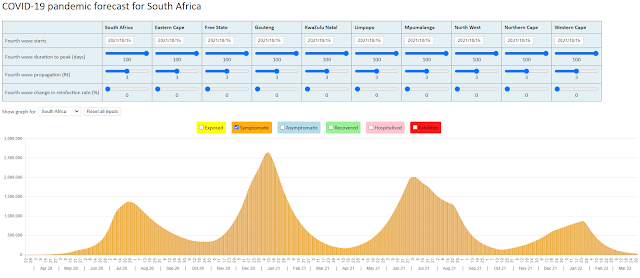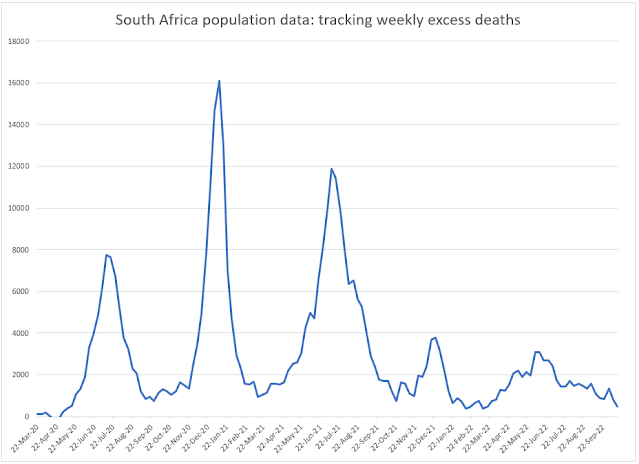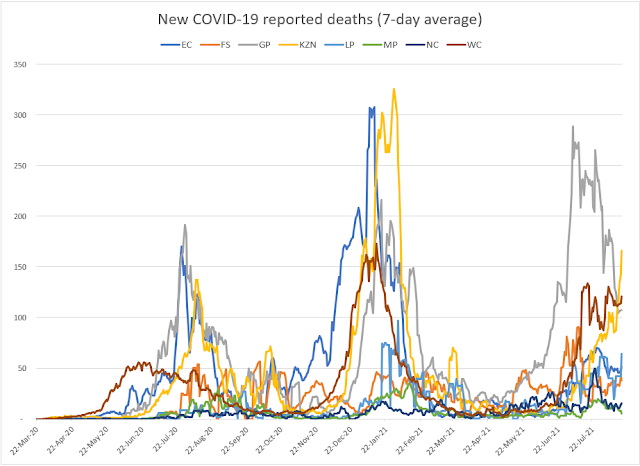With the second wave firmly on a downward slope in all provinces, I am getting asked what can be expected from a third wave.
I have used the latest release of the NMG model to run two scenarios for a third wave in Gauteng, South Africa's most populous province. Both scenarios assume that the third wave will start on 1 April 2021 (brought on by the Easter weekend perhaps) and will reach a peak two months later. The second wave in Gauteng took 70 days (just over two months) to reach a peak.
The first of the two scenarios assume that the speed of propagation of the virus will be twice as fast in the third wave as was the case in the second wave. In this scenario, 67% of the Gauteng population will have been infected in the three waves (according to the NMG model!).
The graph below shows the mode's forecast for daily COVID-19 hospitalisations for the first of the 'third wave' scenarios.
The 501Y.V2 variant of the virus that was prevalent in South Africa's second wave is said to be 50% more transmissible that the original virus that was prevalent in the first wave. The above scenario is then conservative as it assumes that a 'third wave' variant will be 100% more transmissible than 501Y.V2.
The second scenario for a third wave in Gauteng assumes the the variant is 50% more transmissible than 501Y.V2. In this scenario, the third wave is severely dampened by the fact that 55% of the population had already been infected in the first two waves (according to the NMG model!).
It is important to stress that the 'third wave' scenarios shown above are a product of the NMG model and the model's parameters. Critically, the model assumes that an individual once infected (even with no symptoms) will have immunity and cannot be reinfected. All other things being equal, the virus will move slower through a population with a greater proportion of lives that are immune from infection.
The modelling shows that unless we have a variant that is significantly more transmissible than 501Y.V2, we should not see a third wave reach the same height as the second wave did. In fact, I had to increase the viral transmissibility to 3x that of 501Y.V2 to get a third wave to reach the same height of the second wave in Gauteng.
I accept that there are a lot of assumptions that go into the modelling of the SARS-CoV-2 pandemic. But based on what we have witnessed to date there is a reasonable probability that we will reach collective immunity in South Africa without the need of a vaccine. Collective immunity does not mean that there is no risk of infection and that a vaccine has no role. In the Spanish flu pandemic, collective immunity was reached within the first two years but the H1N1 virus was still in the population many years later.
The question that this modelling does ask is whether deploying a vaccination program to achieve herd immunity is the correct strategy for South Africa. I would like to see more public debate and analysis on this point.





Comments
Post a Comment